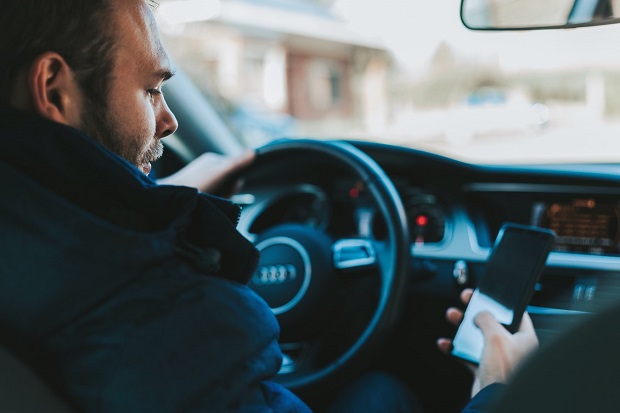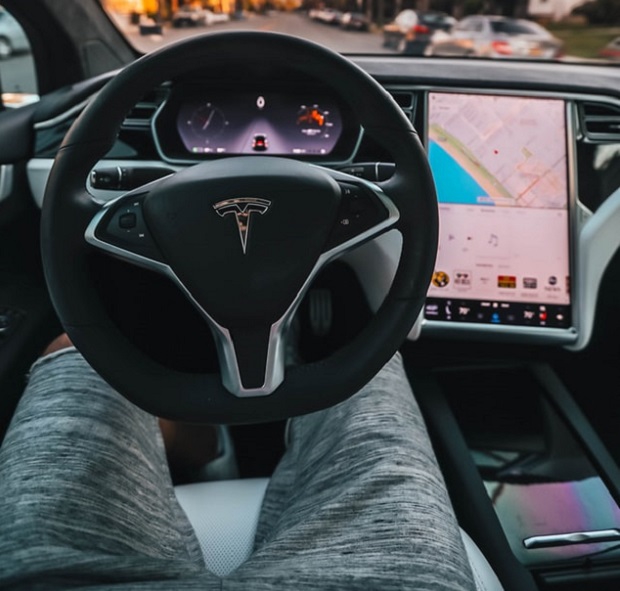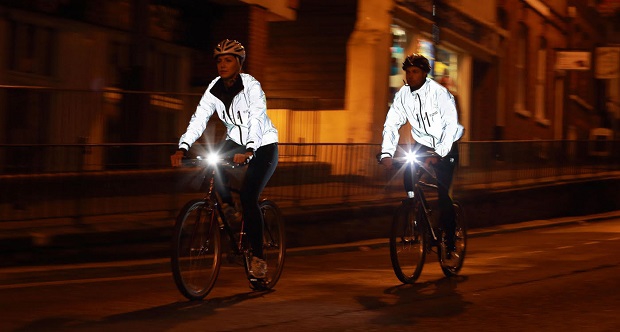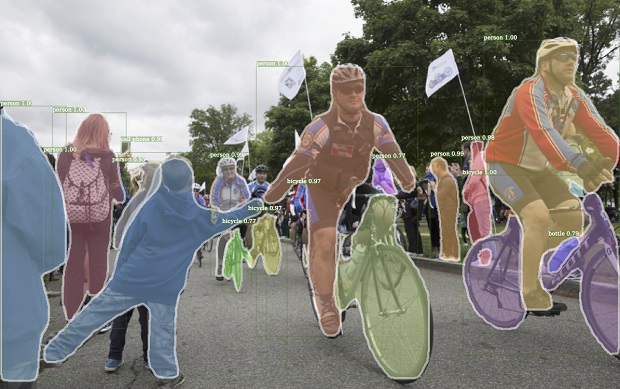Self-Driving Cars: A Tutorial for Cyclists and Runners
Tired of cyclists and runners being injured and killed by cars? I am. Most of us know someone who’s been involved in a vehicle collision. Or have been hit ourselves. I’m donating to yet another GoFundMe page for a memorial service as I write this. The risk is affecting the nature and enjoyment of our sport. One rational response is just withdrawing from the risk – a common, understandable refrain in the Slowtwitch forums. Indoor and off-road riding and running can be rewarding alternatives. But being afraid or unwilling to ride in proximity to cars can still be limiting to the enjoyment of sport and the outdoors. And a detriment to the transportation benefits of cycling and the fundamental right to walk or run safely in public spaces. There is a glaringly obvious factor to the risk of vehicle collision: the failure of people behind the wheels of cars.

This failure can be negligence, hostile intent, health issues, or just plain incompetence. And broadly improving the behavior of people behind the wheel of cars is a complex societal issue. Physically isolating vehicles from cyclists and pedestrians through dedicated cycling and pedestrian infrastructure – is costly and unlikely to reach large areas of the world anytime soon . This article doesn’t attempt to tackle those difficult solutions, but discusses a possible technical solution. The “easy” way out: get rid of the human driver altogether.
Enter the self-driving car. Self-driving vehicle technology promises to eventually remove the human from the enormous responsibility of competent, responsible driving. Is this a solution to our problem – a technological savior? What’s on the roads now, and what’s coming? How do they protect us, and can they be trusted? Is there anything we, as runners and cyclists, can do to better protect ourselves as more of these vehicles hit the roads? How can we work to make this all happen sooner? As someone who’s worked on self-driving tech for nearly 20 years (and has been running and cycling for over 35 years), I hope to provide some insight into these questions.
Will Self-Driving Technology Protect Us?
Will self-driving cars be safer than human-driven vehicles? Almost certainly. It’s not a high bar, unfortunately. Humans just aren’t very reliable drivers. There is an abundance of evidence proving this. But this is also a new and extremely complex technology. A prototype Uber self-driving vehicle has already killed a pedestrian walking a bicycle. It won’t be the last injury or fatality. As with any new technology, there will be growing pains, and the first generations will have flaws. And no technology – even operating perfectly – can completely eliminate risk. But self-driving technology is guided by the central design principle of safety. Avoiding collisions with people, cyclists, or other vehicles is an essential requirement of the self-driving vehicle. Actually getting to where the occupants want to go is a secondary goal. The vehicles will not have divided attention. They will bear no social animosity or bias.. When they sense that their performance is degraded they will pull over immediately.
There are billions of dollars and thousands of the world’s brightest scientists and engineers working on making self-driving technology safe. A major reason that a true self-driving car is not yet on the market is because they’re not yet quite good enough at handling pedestrians and cyclists. But while the comparative safety of self-driving cars over human-driven cars can eventually be statistically proven, real trust won’t be gained by reading statistics or being inundated with marketing from car manufacturers. There’s only one way that deep confidence will be earned: the hard way. By regular, personal interactions that build incremental assurance – experiencing a self-driving car smoothly giving us a 3-foot buffer or successfully performing an evasive maneuver to handle an incapacitated driver. We will interact with these vehicles as passengers, pedestrians, and cyclists. The first interactions may be uncomfortable or even terrifying (though possibly you’ve already had interactions, but not known it). But that will lessen. And trust will develop. Eventually self-driving cars will help us in this process by giving visual or audible cues to let us know they “see” us, and are about to make a safe pass or yield to us – analogous to making meaningful eye contact with a human driver. As trust builds, we may discover a liberating feeling: we will be largely in control of these interactions. With human drivers we are at the mercy of the unknown mental state of the figure behind the wheel: competition for attention with their smartphone, etc. We take the road gambling we don’t get a bad roll of the dice. With self-driving cars, the vehicle is at *our* mercy. We will always have its full and immediate attention. Our lives are its top priority. When one of these cars sees you cycling out on the road, it will immediately start calculating hundreds or thousands of possible trajectories to handle a wide range of conceivable future events. Another vehicle suddenly veers into the lane – the car will have a plan for that.
What’s On the Road, and What’s Coming
Self-driving technology is already operating among us in several forms. There are full self-driving prototype vehicles from Waymo, Uber, Cruise, and others operating on public roads today. Though in most situations these require a human behind the wheel, at least for now. There are also partially self-driving vehicles on the market. The most famous of these might be the ambitiously-but-not-accurately named Tesla “Full Self-Driving” upgrade, which allows…partial self-driving. In addition there is Super Cruise from Cadillac, and various other partial self-driving systems. These partial self-driving systems typically allow the car to drive itself on freeways, handling most typical freeway conditions, including lane changes. They avoid obstacles, follow traffic laws, and make “decisions” about how to safely accomplish the task of successfully navigating among human drivers and other self-driving vehicles. However they also require a human to be fully attentive and ready to take over.

This partial self-driving will expand to almost all major vehicle manufacturers, and gradually expand in scope to include off-freeway driving, and more complex traffic. Eventually, advancement in technology will also remove the requirement that a human driver be attentive and ready to take over. The end-state will be complete autonomy among large numbers of vehicles, like in sci-fi movies. This end-state is likely more than a decade off, but we’ll see continual progress towards that goal at an ever-quickening pace in the coming years.
What We Can Do Now To Help Self-driving Vehicles See and Avoid Us
For the time-crunched reader this answer is easy: do the exact same things we do now to reduce our risk around human drivers.
- Dress to be visible
- Use equipment and technology that increases visibility
- Be predictable.
- Adhere to laws, norms, and etiquette
It is not our job to accommodate the technology: it should accommodate us. The safety guidelines here are common sense to most of us, but I’ll expand briefly on each one to describe how each one applies to self-driving technology. Self-driving cars see and operate among us analogously to how humans do. While technologies among manufacturers will vary considerably, the operations can be broken down into three general stages: 1) detection, 2) perception, 3) planning.
Detection
Detection describes the detection of “stuff” in the world. This is done through the use of sensors, e.g. visible and thermal cameras, laser range finders (lidar), radar, and sonar. These sensors detect things in the world. Some sensors are better at detecting some types of material than others. Some work better in daylight, others at night. Some are hampered by environmental conditions like snow or dust, and some aren’t troubled much by those conditions. Most vehicles will use a combination of these sensors to reliably detect objects in most of the conditions a vehicle can be expected to experience. And the cars, even absent the next two stages described below, should at a minimum, try to avoid hitting any significant object that is detected. This is analogous to seeing something out of the corner of your eye and slamming on the brakes. You might not know what it is yet, but you sense something significant, and you’re not taking the risk. Self-driving cars should respond similarly. They should not risk striking any significant object they sense in the world. This is not yet “artificial intelligence” (that’s below). It’s just a lizard-brain response.

We can do our best to help all these sensors see us. We want to make ourselves “stick out” from the background. Day and night. Snowy, rainy, or clear. Urban or backcountry. For the camera-based sensors, this is our excuse to wear clothes and use equipment that’s flashy. If you “pop” out of the background to the human eye, you likely will to the robot eye as well.
Those plasticy-looking retroreflectors that we all immediately strip off our new bikes? Those are great for improving visibility. Particularly at night. No, I’m not going to put those back on. But kit and equipment with integrated reflective and retro reflective materials can be a good alternative. Several brands including retroreflective fabrics and materials from 3M and other companies. Examples include Pearl Izumi BioViz™ products, the Bont Helix Reflex shoe, or the Bell Stratus Ghost MIPS helmet. Some companies, such as ProViz Sports, specialize in visibility across their entire product line. Optionally, there are a variety of off-the-shelf retro reflective stickers and tapes which can be added to bikes, helmets, and shoes. Flashing LED lights on the rear of a bike – even in daylight – should be standard practice for all cyclists by now.

Perception
Detecting your presence and location is a start, but not enough to navigate predictably and smoothly around us we cycle or run. That requires the ability to distinguish us from, say, a fire hydrant or telephone pole. So after a self-driving car detects your presence, it’ll then try to figure out what you are. The data from all those sensors will be fed into algorithms – often with artificial intelligence (AI) techniques – trained with millions of images of runners, cyclists, and other objects. These training images are being collected today by research and prototype vehicles. The Google Maps cars with all the sensors on top? They’re not just for Google Maps. All the cameras on Tesla vehicles? They’re also being used as research tools by Tesla. These images of us are being used to train and test AI systems. These systems should eventually meet or exceed human performance at correctly identifying important objects in the world. With humans being the most important “object” to get right. There’s really not much we can do to help with this stage. This task is the responsibility of the AI.

Planning
Once a vehicle is able to identify you as a cyclist or runner, it can then “reason” about your likely behavior – the prediction stage. E.g. If you're a road cyclist, it’ll anticipate where you might be likely to go in the immediate future, e.g. turning onto an upcoming bike path or maybe “taking the lane” if a road narrows. Once the vehicle knows what you are, and can reason about how you’re likely to behave, it’ll then be able to operate around you in a predictable and confidence-inspiring manner. E.g. the vehicles will “know” to give cyclists a 3-foot buffer in California, adhering to state law. While this will largely be the responsibility of the vehicle, it will still be our responsibility to adhere to the laws and norms expected of us. If we act inconsistently it may, at times, confuse the self-driving car (as it may confuse a human driver). The self-driving car should, when faced with an uncertain situation, choose the safest, most conservative course of action. But it would generally be safer to act predictably when possible.
What We Can Do To Advocate for Adoption of Self-Driving Tech
Is there anything we can do to promote the use of self-driving cars? The most obvious is for those of us with the financial means to consider purchasing or leasing cars with the new technology as they emerge. As with most new automotive technology, it will show up on the more expensive models first. But self-driving technology will encompass more than just cars. It will involve communications equipment, public infrastructure, and continual incremental improvements in the recreational equipment we use every day. Some day our smartphones, cycling head units or other wearable equipment may further increase our visibility to the sensors on self-driving cars, or even communicate directly with them. The Garmin Varia radar may portend the future, e.g. “notifying” vehicles of our presence not just through flashing tail lights, but by “talking” directly to the vehicle. Keep track of these technologies as they emerge, and reward those companies that lead in innovation.
Public policy will evolve with the technology. There will be decisions to be made about changes to road infrastructure and the requirement for human drivers to be ready to take over within a self-driving vehicle. There will certainly be broad and continued changes to how the legal system and insurance industry adapts to the new technology. Government will solicit public input. It will be important that the recreational cycling and running community have a persistent, educated, and loud voice in these policy discussions. So keep track of the policy discussion as it percolates through local and national government, and support the policy that you think may best represent our interests. A rigorous culture of safety rather than a rush to market should be a priority.
None of this absolves us or drivers of the responsibilities we have today for protecting ourselves and others. And it likely won’t be a get out of jail free card for the societal, political and economic forces that have brought us to where we are. But the future is very likely to be an improvement on what we have now. We have reason to believe that in the coming decades we’ll be losing fewer of our friends, teammates, and family members to injury and death. I can’t wait.




Start the discussion at slowtwitch.northend.network